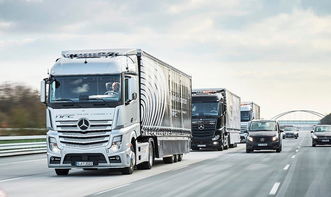In today’s fast-paced commercial transportation industry, fleet safety and risk management are more important than ever. Fleet operators face rising insurance premiums, increasing road incidents, and a surge in fraudulent claims—especially crash-for-cash scams that cost companies millions annually. In such an environment, having clear and irrefutable evidence is no longer optional; it’s essential.
This is where dash cams come in—not just as a reactive measure, but as a proactive investment in operational safety, efficiency, and accountability.

One of the most compelling reasons to invest in dash cam technology is its effectiveness in fighting crash-for-cash fraud. According to the UK’s Insurance Fraud Bureau (IFB), of the 2.7 million motor insurance claims filed between October 2019 and December 2020, over 170,000 were suspected to be linked to crash-for-cash scams.
These scams are designed to exploit fleet operators—fraudsters deliberately cause collisions and then file false injury or damage claims. Without clear evidence, many businesses are forced to accept liability, resulting in significant financial losses and long-term increases in insurance premiums. Dash cams offer indisputable visual proof of what really happened on the road. With recorded footage, fleet managers can:
By equipping your vehicles with dash cams, you not only safeguard your assets but also send a strong message: your company prioritizes transparency, safety, and accountability.
Dash cams don’t just offer legal protection—they enhance driver confidence and promote a culture of safety. When drivers know their actions are being recorded, they tend to drive more cautiously, helping prevent risky behaviors and reducing the likelihood of accidents.
Moreover, from a client’s perspective, a fleet equipped with modern safety technologies reflects professionalism and responsibility. It reassures business partners that:
In the unfortunate event of an incident, you can provide stakeholders with transparent evidence and detailed reports, strengthening your reputation and building long-term trust.

With the rise of ESG (Environmental, Social, and Governance) standards and increasing regulatory focus on fleet safety, governments and insurance bodies are pushing for mandatory dash cam installations in commercial vehicles. For example, the European Union has already introduced legislation requiring DMS (Driver Monitoring Systems) in new commercial vehicles starting from 2024. In the U.S., OSHA and FMCSA are also exploring stricter guidelines around driver behavior monitoring and incident reporting.
Investing in dash cams now not only future-proofs your fleet but ensures compliance with evolving industry regulations. As these regulations become more stringent, fleets without advanced safety systems may face penalties or restrictions on operations.
Beyond basic recording, modern dash cam systems like HBOIOT’s CH AI Mobile DVR HB-VT08 leverage artificial intelligence and IoT connectivity to deliver proactive safety features. Here’s how traditional surveillance compares to smart dash cams:
| Feature | Traditional Onboard Cameras | HBOIOT AI Dash Cam |
|---|---|---|
| Video Storage | Local SD card storage, prone to loss or damage | Cloud-based plus local storage for redundancy and easy access |
| Video Access | Requires physical retrieval | Remote access via secure platform anytime, anywhere |
| Event Response | Passive recording after the fact | Proactive alerts through ADAS (Advanced Driver Assistance System) and DMS (Driver Monitoring System) |
| Data Integration | Isolated system without integration capabilities | Seamless integration with GPS tracking, fleet management systems, and real-time analytics |
These intelligent capabilities transform dash cams from passive tools into active risk mitigation assets, offering real-time insights and predictive maintenance capabilities.
Whether you’re operating delivery vans, commercial trucks, or a mixed fleet, dash cams are one of the most cost-effective safety upgrades you can implement. By helping to prevent fraud, reduce insurance costs, and protect drivers and assets, dash cams offer returns far beyond their initial price.
In today’s competitive landscape, investing in a dash cam system is not just a security decision—it’s a strategic move toward smarter, safer, and more reliable fleet operations.
At HBOIOT, we provide cutting-edge video telematics solutions built specifically for commercial fleets. Our AI-powered dash cams—such as the CH AI Mobile DVR HB-VT08—combine real-time GPS tracking, ADAS, DMS, and intelligent event detection to help fleet managers stay in control, reduce risk, and optimize performance across every journey.
With years of experience and a strong commitment to innovation, HBOIOT is recognized as one of the leading Mobile DVR manufacturers in China. Our systems are trusted by logistics providers, fuel transporters, and commercial fleets across Asia, the Middle East, and beyond.
Contact us today to learn more about our smart dash cam solutions or to book a live demo. Partner with HBOIOT and safeguard your drivers, vehicles, and business with next-generation video telematics that deliver clarity, control, and confidence—mile after mile.